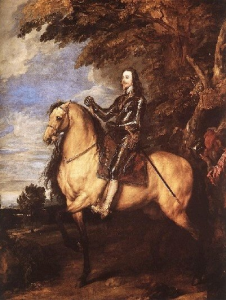 By Sandra Gulland (Guest Contributor)
By Sandra Gulland (Guest Contributor)
What is Bone Magic?
Bone Magic was a ritual used in the 17th century to tame unruly horses. George Ewart Evans details the procedure in The Days That We Have Seen:
1) Kill a frog or toad.
2) Leave it on a whitethorn bush overnight.
3) Bury in an anthill.
4) Under the light of the full moon, dig it up and–watching it very carefully, never glancing away, take the skeleton to a running stream. Throw it into the water, and watch it go upstream, then wait for the crotch bone to float back, against the current. (“The Devil is there with you then,” it was said.”
5) When dry, crush the bone into a powder and mix with oil.
6) Dip your finger in it and wipe it on the horse’s tongue, his nostrils, his chin and chest.
The bone powder was believed to give the possessor “magic” (i.e., diabolical) control over horses. “Then the horse is your servant, and you can do what you like with him.”
Continued Uses and Traditions
Bone Magic continued to be used even into the last century. “It gives you that confidence. You can trust yourself to it. There’s nothing that will get away from me.” Some of the men who practiced Bone Magic were reported to go mad, become “unhinged.” It was said that they had “been to the river,” “been round rivers and streams.” One man claimed that his stallion stood beside his bed at night. His wife told him, “You have to do something. Nothing bakes right; I don’t feel right. And you, awake all night and your horse coming to the side of your bed.” To get rid of the curse, he dug a hole in clay, filled the tin of bone powder with milk and vinegar, and buried it in the hole. He could sleep then, but he couldn’t control horses as well, he said, having to use “circus cords” to keep them under control.
Bone Magic continued to be used even into the last century. “It gives you that confidence. You can trust yourself to it. There’s nothing that will get away from me.” Some of the men who practiced Bone Magic were reported to go mad, become “unhinged.” It was said that they had “been to the river,” “been round rivers and streams.” One man claimed that his stallion stood beside his bed at night. His wife told him, “You have to do something. Nothing bakes right; I don’t feel right. And you, awake all night and your horse coming to the side of your bed.” To get rid of the curse, he dug a hole in clay, filled the tin of bone powder with milk and vinegar, and buried it in the hole. He could sleep then, but he couldn’t control horses as well, he said, having to use “circus cords” to keep them under control.
Sandra Gulland’s novel, Mistress of the Sun, is set in the 17th century court of Louis XIV, the Sun King. She is also the author of the Josephine B. Trilogy, internationally best-selling novels based on the life of Josephine Bonaparte, now published in 14 countries. She has two blogs, one on writing and one on 17th century research. For more information, see her author website.
This post first appeared at Wonders & Marvels on 26 December 2008.
Image: Anthony van Dyck, “Charles I on Horseback,” 1635. (Windsor Castle Royal Collection)
Source: Evans, George Ewart. The Days That We Have Seen. London: Faber and Faber, 1975.
Wonders and Marvels
